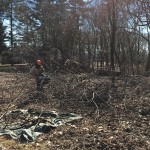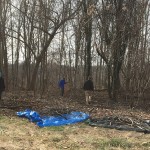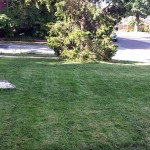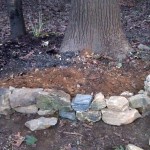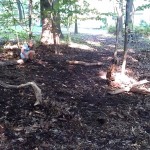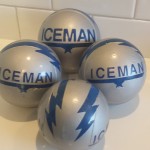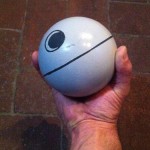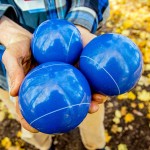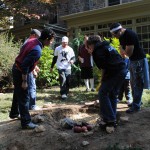On a cold November morning near Lake Chautauqua, NY, 10 Members of Philly Stones League gathered for the Hope’s Cup; a 2 day, 5 round team stones event. PSL members would take on SC Finger Lakes in 5 rounds spread across two courses and 5 different playing formats. The formats include Standard 2v2 Stones, 2v2 Matchplay, 4v4 Standard, 4v4 Matchplay and 3-Ball Singles. Each win earned you points, and the first team to 15 Points was the winner.

Round 1: Match Play- Federated Tracts- Hope’s Windows
Philly Started strong with a win in the first match and a surprising push in the second before dropping the next 2 games. Game 5 featured the best matchup of the Round with Harry Cusick and Bobby Bardsley of PSL vs Chris Kinka and Erik Johnson of FLX. The power team from Philly was victorious to tie up round 1. PSL secured an easy victory in the final game.
PSL-3.5
FLX- 2.5
Round 2: 4v4 Standard- Federated Tracts- Hope’s Windows
Round 2 was saw the most lopsided victories of the entire weekend. FLX took match 1 by a landslide followed but Philly doing the exact same in match 2. Match 3 was close until Philly took advantage of an error by FLX to go up heading into 5. Playing conservative backfired after 3 straight poor throws left Philly with only 1 stone to FLX’s 3. Ignoring the safe play, JY Halpin of Philly dropped his stone within 18 inched to put the pressure on FLX. An excellent throw game FLX the point, but needing a 6, they were forced at Halpin’s stone. An excellent knockout by Peyton Sivak almost made it happen, but his stone ended in the water, and the last chance for Finger Lakes in round 2.
PSL- 7.5
FLX- 4.5
Round 3: 2v2 Standard- Brewer’s Hallow- Southern Tier Brewery
With Philly up 3 points this early, FLX needed some wins. Starting off 1-2 in the first 3 games, FLX’s heavy back end player matches proved the right move as they took the next 3 including an epic game 6. Facing the power group of Harry Cusick and Bobby Bardsley from round 1 FLX threw 1st round draft pick and assistant Captain Lake Sivak and Brandon West. After a slow start for PHL, they battled back within striking distance on the 5th landing, an errant throw left Philly down to their last stone. Needing a reset- Cusick knocked the mark out from 18 feet away. The miracle comeback wasn’t ready to show yet, as Sivak and West kept the pressure down to win the next throw.
PSL- 9.5
FLX- 8.5
End of Day 1.
Round 4: 4v4 Match Play- Brewer’s Hallow- Southern Tier Brewery
Round 4’s 4v4 was much closer then Round 2. Match 1 featured some of the hottest players of the tournament all facing off and resulting an push. FLX stacked the deck in Match 2 looking for an easy win. A literal David and Goliath match featuring Philly’s youngest- Luke Wilk and Thomas Kinka partnered with Veteran Sean Smiley and 2021 PSL MVP Mark D’Alfonso. The Philly team battled hard and took the much higher ranked FLX team all the way to the 5th landing before falling just short. PSL rebounded with a much needed victory in Match 3 to stop the point bleeding.
PSL- 12.5
FLX- 11.5
Round 5: Singles (3-ball)- Brewer’s Hallow- Southern Tier Brewery
The weekend’s final round had 11 singles matches. The Chess match of player match-ups was highly debated when FLX chose to go with a back heavy line up- saving team’s top 2 players for 9th and 11th. With Philly only needing 5 wins to close it out, they might not even have a chance to play. After Bobby Bardsley continued his excellent weekend with a win in Match 1, it started to look like the gamble paid off. FLX won 5 of the next 7 including a major upset by FLX’s Wyatt Perry.
Game 9 featured 2 of the weekends top players with Lake Sivak facing Ryan Kinka. Kinka controlled the entire match, holding Sivak to 1 point until an unforced error gave Sivak a drop 5 pointer. Sivak carried the lead until the last stone of the match, and Kinka was able to score on a 30 footer downhill to earn the push.
PSL- 13.75
FLX- 13.75
Game 10 featured a heavily favorited Nate Priester (3-0-1) of PSL vs Rob DeBois (0-3-1) of FLX. Rob was able to shock the crowd and get out to a 9-0 lead. Priester was able to settle down, with a huge knockout and then scoring multiples on X to cut the lead in half. Riding the emotions of the crowd it looked like the fantasy win was going to fold around them, but Debois had other plans. Two great throws into the landing on 4 gave him the cushion he needed to hold on for the upset win.
PSL- 13.75
FLX- 14.75
Game 11 and final match of the event featured Erik “EJ” Johnson, FLX’s top player Vs John Janick a Veteran and Stones Founder who came out of semi-retirement for the event. Before the round, Janick requested the matchup. ” EJ is throwing lights out…. but if I throw my best game, I think I can beat him.” Janick was throwing great, but EJ was borderline unbeatable taking a 8-0 lead after 3. Janick tried to slow the game down on the 4th stretch, but EJ was having nothing to with it and knocked out the mark. Going straight from Base to landing, EJ landed the mark. With his first throw, his stone hit a tree and bounced harmlessly out of bounds. Making the safe choice, EJ attempted to lay up in a bunker but missed, and the stone bounded into the water. This was the opening Janick needed. He dropped for 5 points and was only down 3. Janick then went to X and scored 4- completing the comeback. 2 rounds later.. Janick was able to hit the landing of 5 from the 2nd stretch and put his final stone in play. After 3 impossible attempts to knock out the mark, one of the greatest matches in stones was complete.
PSL-14.75
FLX-14.75
After the completion of 5 rounds and 29 Stones matches, no team managed to get to 15 points. A SUDDEN DEATH match was to determine the winner. Both teams chose their top players to go head to head, Nate Priester and Ryan Kinka for Philly and Lake Sivak and Erik Johnson for FLX. After 3 stretches, this game looked identical to the last, FLX had the lead 8-1 after 3 stretches.
Lake Sivak went from Base to Landing on 4- the shot that doomed EJ. This time, Lake put his first one in the bunker- 20 inches away. Kinka’s first one went long, but Priester was able to land inside Sivak. 2 more stones by EJ and Sivak couldn’t beat it but with his last stone, EJ got redemption and knocked out Priester’s stone to lay 2. With the final stone, Kinka dropped it to 2 inches for 1 point.
Trailing 8-2 Philly had to to X. Priester’s first attempt was long, but managed to establish with his final mark throw. He then placed his first stone within 3 inches. Sivaks first attempt was on line, but long, and bounced hard off the rocks into the water. FLX remaining 2 stones couldn’t find their mark. The door was open for Philly. Kinka’s first stone was right on target, kissing the mark. The elusive “12” was not to be had though, both remaining Philly stones bounced harmlessly away.
Now only leading 8-6 in a game eerily similar to the last, EJ didn’t risk the final tough throw to 5 landing and decided to lay up on 4th’s bunker. After establishing close it was back to team Philly. Kinka’s first stone was on target and took the establishment. Sivak with room above the mark dropped it on top to flip the side yet again. Priester continued his precision play and knocked both Sivak and the mark. The mark ended up on the 5th stretch and Sivak’s dislodged stone stayed in play. With the mark on the crest of the 5th, there was almost no way to get close. Kinka threw a perfect touch low rolling stone that went through the 4th and the OB channel, but took the hill on 5 and rolled back into play, earning the establishment. With the need to be aggressive, FLX tried both long and short, but were unable to keep either of their final stones in play. Priester followed Kinka’s play with the touch low roller but this time, his stone bumped Sivak’s as it rolled back into play, knocking it out and securing 3 points for PHL.
The comeback was complete, leading 9-8 and needing to win by 2, all Philly needed was to control the next round. Kinka went straight to landing and DEEP. The mark ended only 6-8 inches from the back and on the crest of a hill. The following establishment was well played. Short, safe and slightly to the left but plenty close enough to force FLX’s players hands. FLX’s first 2 stones fell short then long OB, when Sivak stepped up and threw a high arching gem and landed 8 inches short of Kinka’s establishment and rolled forward to take it. The joy was short lived though when Priester stepped up with a similar shot that rolled inside. It was down to the final stone. Erik Johnson, FLX’s strongest player all weekend stood at the spot. As he released the the final stone of the tournament the air was silent, it hit and rolled out of bounds. The event was over.
PHL- 15.25
FLX- 14.75














